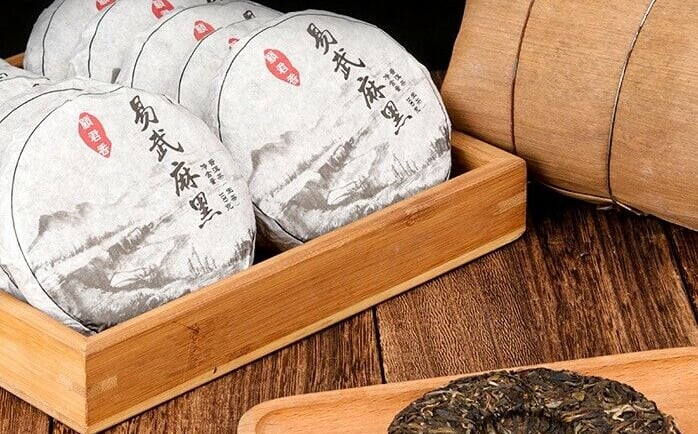Pu-erh Tea vs. Darjeeling Tea: Origins, Similarities, and Distinct Health Benefits
Explore the contrasts and connections between Pu-erh and Darjeeling teas—their origins, cultural heritage, and distinctive health benefits—two timeless brews uniting wellness and tradition.
PU ERH TEAART OF DRINKINGCEREMONIESCHINESE CEREMONIESCHOLESTEROL MANAGEMENTTEAANTIOXIDANTHEALTH BENEFITCULTUREWEIGHT LOSSTEA LOVERSCHINAGUT HEALTHCHINESE TRADITIONPROBIOTICART OF TEADARJEELING TEAINDIA


Pu-erh Tea vs. Darjeeling Tea: Origins, Similarities, and Distinct Health Benefits
Tea, a humble leaf, has traveled across centuries and continents, weaving itself into the fabric of human culture. Among its many celebrated varieties, Pu-erh tea of Yunnan, China, and Darjeeling tea of the Himalayan foothills in India stand as two strikingly different yet equally revered expressions of nature’s bounty. Both have earned a place in the hearts of connoisseurs, not only for their flavors but also for their reputed health-giving properties. To sip either is to taste history, terroir, and the artistry of cultivation. Yet, their stories and benefits diverge in fascinating ways.
Origins: Where Earth Meets Leaf
Pu-erh Tea finds its roots deep in the mist-clad mountains of Yunnan province, where ancient tea trees—some over a thousand years old—grow in symbiosis with the land. It is unique for being a fermented tea, crafted through microbial aging. The leaves are often compressed into cakes or bricks and allowed to mature, developing earthy, mellow flavors that deepen with time, much like fine wine. The tradition of Pu-erh is deeply tied to Chinese history, particularly the Silk Road, where it was once traded for horses and spices.
Darjeeling Tea, on the other hand, hails from the cool slopes of the Darjeeling district in West Bengal, India, cradled by the Himalayas. Unlike Pu-erh’s long fermentation, Darjeeling is typically processed as a black or oolong-style tea, though green and white varieties exist. Its fame lies in its delicate “muscatel” flavor, a floral-fruity profile unmatched elsewhere in the world. Often called the “Champagne of Teas,” Darjeeling owes its uniqueness to its terroir—high altitude, misty weather, and mineral-rich soil combine to create leaves that are both fragile and sublime.
Similarities: Where East Meets West
Though worlds apart in geography and style, Pu-erh and Darjeeling share certain common threads:
Artisanal Heritage – Both teas are celebrated for centuries-old traditions of cultivation and craftsmanship. Neither is an industrial product; each requires care, precision, and an intimate relationship with nature.
Rich in Polyphenols – Both teas are packed with antioxidants that help neutralize free radicals in the body. These compounds contribute to their shared reputation for promoting longevity and vitality.
Digestive and Metabolic Aid – While Pu-erh is more directly associated with fat metabolism, Darjeeling’s gentle tannins also support healthy digestion. Both can be enjoyed as post-meal companions, though Pu-erh has a stronger role in traditional digestive rituals.
Mindful Drinking Cultures – Both teas are steeped—literally and metaphorically—in cultural rituals. Pu-erh is central to Chinese tea ceremonies, while Darjeeling remains a symbol of colonial-era refinement and modern tea culture in India.
Differences in Health Benefits: A Tale of Two Elixirs
While both Pu-erh and Darjeeling promote well-being, the way they work with the body reveals their unique characters.
Pu-erh Tea: The Fermented Healer
Weight and Fat Metabolism – Thanks to microbial fermentation, Pu-erh contains compounds like lovastatin-like substances that are believed to help regulate cholesterol and aid fat breakdown. It is often recommended for those seeking to support weight management.
Gut Health – The fermentation introduces beneficial microbes, making Pu-erh a probiotic ally. It gently nurtures gut flora, supporting digestion and overall gut balance.
Calming Yet Energizing – Unlike sharp caffeine jolts, Pu-erh offers a grounding energy—earthy, slow-releasing, and stabilizing—making it a popular choice for meditation and mental clarity.
Detoxification – Pu-erh’s earthy brew is often associated with cleansing the system, particularly the liver, though more scientific research is needed to fully validate this.
Darjeeling Tea: The Floral Guardian
Cardiovascular Support – Rich in flavonoids, Darjeeling tea may support heart health by reducing oxidative stress and improving circulation.
Mental Alertness – Darjeeling’s caffeine content, though less than coffee, sharpens focus without overwhelming the nervous system, making it a gentle stimulant.
Immune Support – With catechins and theaflavins, Darjeeling boosts the immune system’s natural defenses against infection.
Mood Lifter – Its delicate bouquet of floral and fruity notes often has a subtle mood-enhancing effect, lightening the spirit much like its Himalayan breezes.
Choosing Between Them: Earth or Sky?
When deciding between Pu-erh and Darjeeling, one might imagine choosing between earth and sky. Pu-erh, with its dark, rich body and grounding qualities, feels rooted and ancient, best suited for those seeking inner stability, digestive wellness, or a meditative companion. Darjeeling, in contrast, is bright and airy, lifting the senses, perfect for afternoons of focus, gentle energy, and conversations that wander like mountain winds.
Neither is superior; rather, they complement one another as yin and yang. Pu-erh is the deep, earthy bass note; Darjeeling the light, floral treble. Together, they illustrate how different traditions and landscapes yield equally profound gifts to human health and spirit.
Conclusion: Two Leaves, One Journey
In the dance between Pu-erh’s ancient earthiness and Darjeeling’s ethereal charm, we discover the breadth of what tea can be. Both offer more than flavor; they offer pathways into cultural history, mindful living, and natural wellness. Whether one prefers the grounding embrace of Yunnan’s aged leaves or the airy grace of Himalayan buds, each cup serves as a reminder that tea is not just a beverage—it is a bridge between body and soul, past and present, earth and sky.
